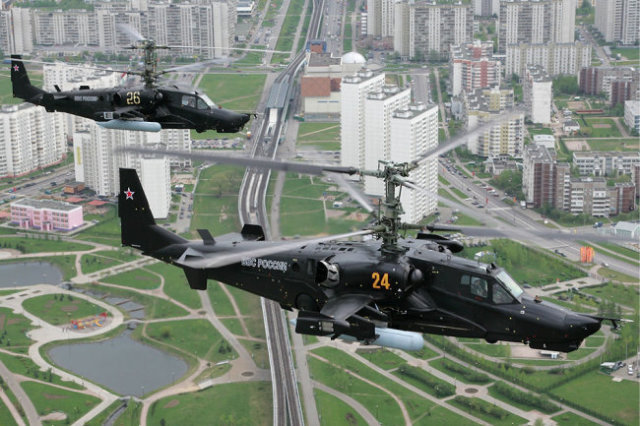On January 6, 2001, a Ka-50 attack helicopter took off from the Severny airfield on a combat mission in Grozny. The pilot needed to test the tactics and weapons of the Black Shark for the first time in a real situation.
In order to get into the combat zone, two Ka-50s and a Ka-29 guidance helicopter had to fly from Torzhok to Chechnya. In flight, the combat strike group was accompanied by a Mi-8 helicopter. The Black Sharks arrived at their destination on December 26, 2000 and found themselves in complete secrecy, as the militants promised one million dollars for the destruction of the Ka-50.
A combat strike group was stationed on a site sheltered from shelling by an earthen rampart and the hull of an unused helicopter, and at night the guard was reinforced by airfield maintenance vehicles. Precautions, as the group commander Vasily Khanykov recalled, were not superfluous. The terrorists tried to get to the Ka-50 through underground sewer systems, but the attempts were stopped by security guards.
Although the militants no longer had portable anti-aircraft missile systems, the Ka-50 was equipped with side armored windows and additional protection of the cabin floor. A digital video camera was added to the equipment to record everything that the pilot saw, including through the sighting system.
For several days, helicopter pilots from Torzhok mastered the theater of combat operations, and then flew out to destroy a camouflaged point and a warehouse of militants. As a result of the raid, the targets were hit.
It should be noted that the huge advantage of the Ka-50 was the coaxial arrangement of the three-bladed rotors, which allowed the helicopter to maneuver in the mountains without significant difficulties. Once, to avoid a rock, the pilot had to take off vertically and exceed all the calculated speed characteristics - it reached 30 meters per second.
"In the mountains it is necessary to fly only on this machine," - said the head of the department of the 344th Center for combat training and retraining of flight personnel of the army aviation Sergey Zolotov.
Mi-24P pilots from the Vyazemsky helicopter Regiment, who worked together with the "Black Sharks", admitted that they were not ready to accompany the Ka-50 and then the" Crocodiles " were controlled by pilots from Torzhok.
The targets were usually militant camps, ammunition depots, dugouts, and shelters. Most of them were located in the gorges, on the slopes and peaks of the mountains. And yet the pilots worked flawlessly.
For example, on January 9, a well-camouflaged dugout was found near the village of Komsomolskoye at the entrance to the gorge. There was an observation tower nearby. In restricted airspace, the pilot of the Ka-50 was able to make the time and dive to fire unguided rockets s-8. The camera recorded the flash of the explosion, substantially surpassing power undermining combat units rockets s-8 with the dispersion of the logs and ground, and later gave reason to conclude destroyed ammunition depot. Meanwhile, the Mi-24 helicopter "demolished" the observation tower.
On February 6, the combat strike group flew on a mission to the area south of the village of Centoroy. There, a camouflaged and fortified militant camp was discovered in the forest, with stone houses buried in the ground in the center. Despite the limited visibility in the gorge, the Ka-50 attacked and fired two guided missiles "Whirlwind" from three kilometers away, which, having a powerful high-explosive warhead, completely destroyed buildings. The targets were destroyed in a single pass.
On February 14, the full-strength combat strike group flew out on a free hunt. In the mountains near the villages of Duba-Yurt and Khatuni, the pilots were able to detect and destroy eight targets.
In just 45 days of combat operation, the Ka-50 and Ka-29 helicopters used up 929 missiles, mostly S-8s. In combat sorties, 30-mm 2A42 guns were also used, the ammunition consumption was 1,600 shells. The battle group had no losses.
Nikolay Grishchenko

